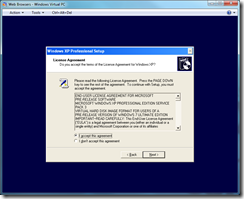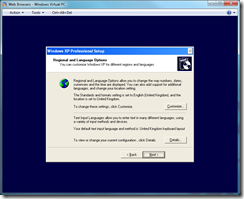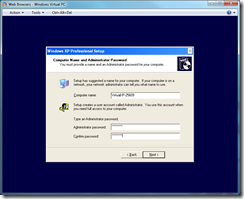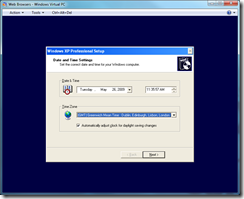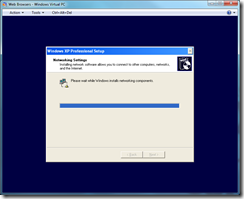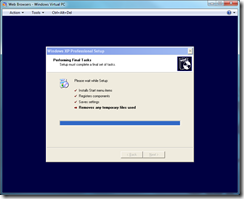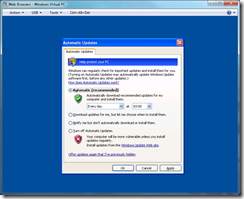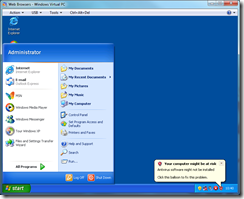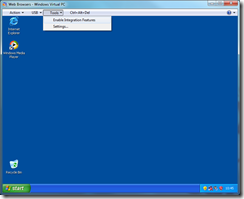Creating a new Virtual PC using the Virtual Windows XP Base Disk
One of the most useful elements of the Virtual Windows XP feature in Windows 7 is that the VPC is easily replicated and you can have multiple virtual machines all publishing applications which run in their own sandboxes.
Create a new Virtual Machine
Create a Differencing Hard Disk from the Virtual Windows XP Base
Start the VM and run through the setup wizard:
Configure the VPC for updates and user accounts:
Open up Computer Management and enable the ‘User’ account, then reset the account password to something you know.
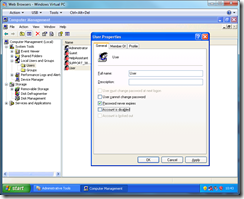
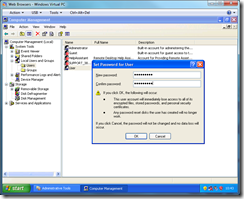
Set the login account to the user account you just enabled.
Configure the applications on the VPC:
Once you’re logged on as User, create a new shortcut in c:documents and settingsall usersstart menu and wait a few minutes.
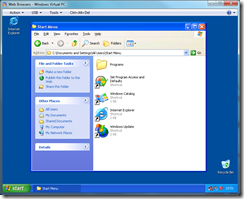
You should see your start menu update with the new application shortcut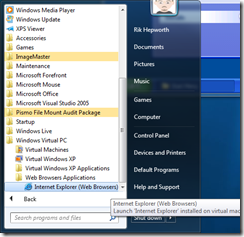
Each virtual machine gets a folder in your start menu beneath Windows Virtual PC and the applications on each PC appear in there.Once you’ve finished configuring your applications, log off your session on the virtual PC (don’t close the PC or shut it down)

Then close the VPC down from the Action menu and choose Hibernate
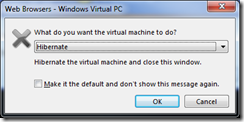
If you now start any of the applications that have appeared in your main computer’s Start menu, the VPC will fire up in the background and you application will appear on your desktop. This is a great way to create multiple VPCs with applications that might conflict with each other.
There is a catch, however. Windows Virtual PC requires hardware virtualisation support to work. In my opinion this is a mistake. Since the virtual machines use emulated hardware rather than accessing the machine hardware like Hyper-V VMs do, I can’t see the reasoning here. Virtual PC 2007 used the hardware virtualisation if it was available but didn’t force it on you, which was the correct approach. Lots of businesses will find this technology useful, but will discover that the majority of their computers won’t be able to use it. At that point, the solution may as well not exist, and I for one hope that Microsoft change their mind about hardware virtualisation support before Windows Virtual PC ships.
